The Great Arcana, also known as the Major Arcana, consists of 22 powerful tarot cards that represent major life events and spiritual lessons. Historically, tarot cards were primarily used for playing games before their association with divination. Unlike the Minor Arcana, which deals with daily occurrences, the Great Arcana delves into deep, universal themes. In this guide, you’ll learn about the unique meanings of each card and how they can provide profound insights into your life’s journey.
Key Takeaways
-
The Major Arcana consists of 22 cards representing significant life events and spiritual lessons, reflecting personal growth and universal truths.
-
Key cards like The Fool, The Magician, and The High Priestess emphasize themes of new beginnings, personal power, and intuition, guiding individuals in their life journeys.
-
Astrological correspondences linked to Major Arcana cards enrich interpretations, offering deeper insights into their meanings and relevance during tarot readings.
What Are the Great Arcana Cards?
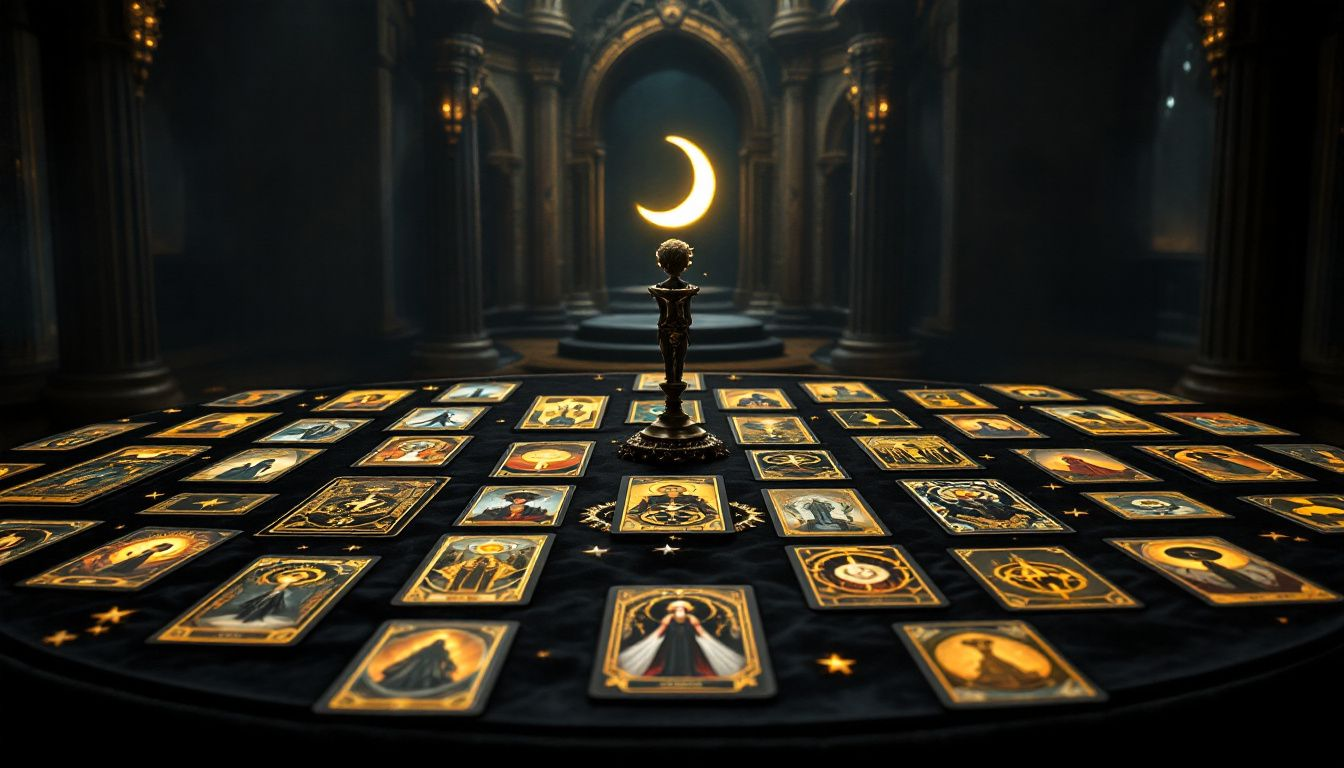
Every tarot deck is anchored by the Major Arcana, a set of 22 cards that represent significant life events and universal aspects of human life. They serve as guideposts during crucial times in our lives, illustrating life’s voyage through recognizable archetypes and narratives that mirror personal tales.
Within the tarot narrative structure, The Fool embodies the protagonist of the Major Arcana. This card heralds new beginnings and untapped possibilities along one’s path. As we delve deeper into the deck, we encounter an array of archetypal figures mirroring various phases, obstacles, and victories within our own journeys.
The Major Arcana cards represent significant life events, archetypes, and spiritual themes, highlighting their unique meanings and interpretative flexibility.
Distinguished from their counterparts in tarot readings are the trump cards or major arcana cards—symbols for essential life events—and they emphasize fundamental lessons awaiting mastery. In contrast to this group are those constituting Minor Arcana: fifty-six elements focusing on day-to-day affairs. It’s these major trump cards which point toward overarching themes and spiritual guidance critical to one’s passage through life.
Profound insights can be gleaned from understanding each individual meaning attributed to every card within Major Arcana—they impart wisdom about grander existential motifs while aiding us in steering through varied encounters with existence itself. By interpreting these symbols accordingly comes an enriched comprehension regarding both our personal paths but also collective truths weaving throughout humanity including intricate interpretations behind each major arcana symbol.
The Journey of the Fool
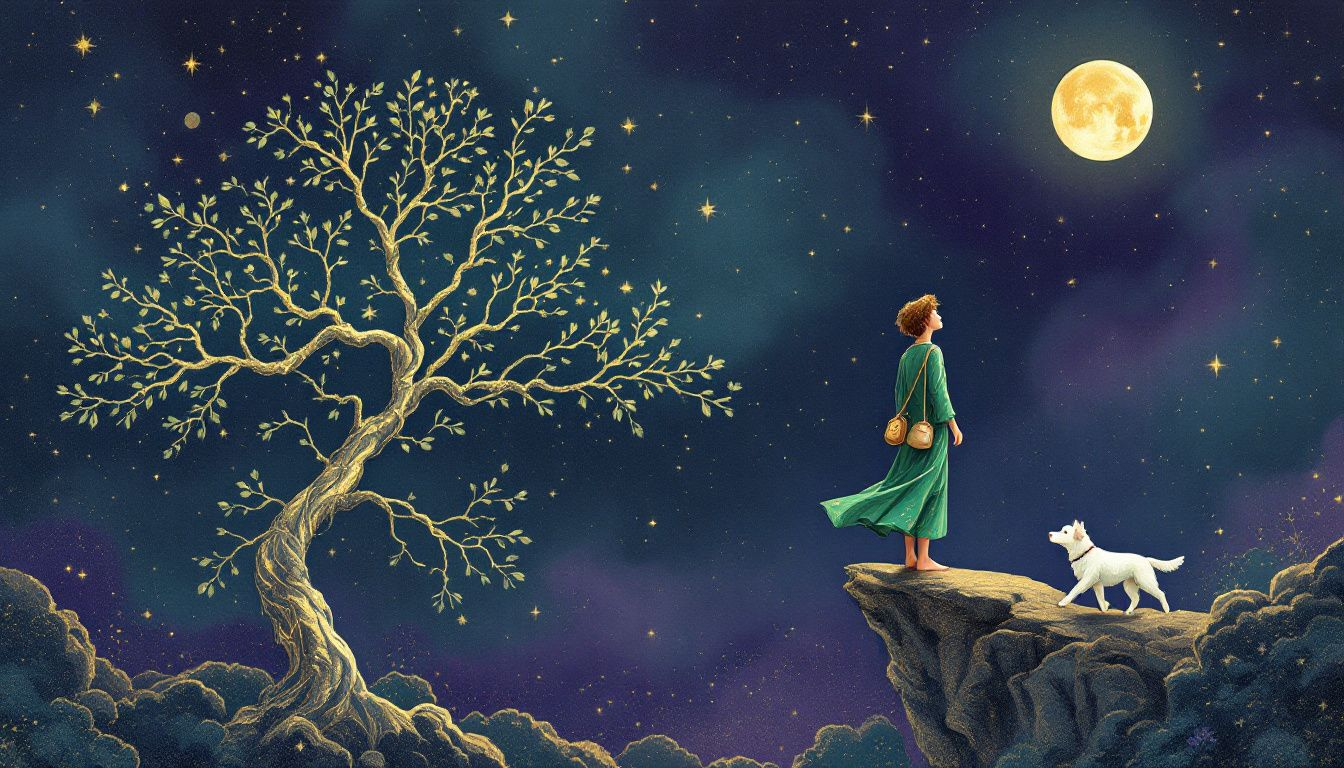
The initial card in a tarot sequence is encapsulated by the Fool, which signifies the commencement of all ventures and serves as an emblem of nascent opportunities. It captures the essence of unexplored possibilities and conveys the excitement associated with venturing forth on an entirely new quest. The spirit embodied by the Fool encourages a leap into unfamiliar territory without reservations.
Comparable to grand narratives featuring profound transformations that populate iconic literature, this particular tarot card epitomizes such transformative escapades. It represents embarkation points for personal evolution and enlightenment journeys similar to those experienced by literary heroes who find themselves at crossroads brimming with promise and yearning curiosity.
When interpreted during tarot readings, this card urges us to reconnect with our youthful audacity while daringly stepping toward what has yet to be revealed. Symbolizing prospective explorations coupled with readiness to break from habitual confines, it summons courage within us as well as faith in navigating paths that lead towards enrichment and self-realization.
For novices delving into tarot’s mysteries or seasoned practitioners versed in its nuances, the enduring message carried through time via each interpretation resonates: every significant pursuit starts simply—with one step forward—and we should proceed retaining wisdom gleaned from prior encounters involving embracing uncertainties wholeheartedly while steadfastly believing in life’s unfolding tapestry.
Manifesting with The Magician
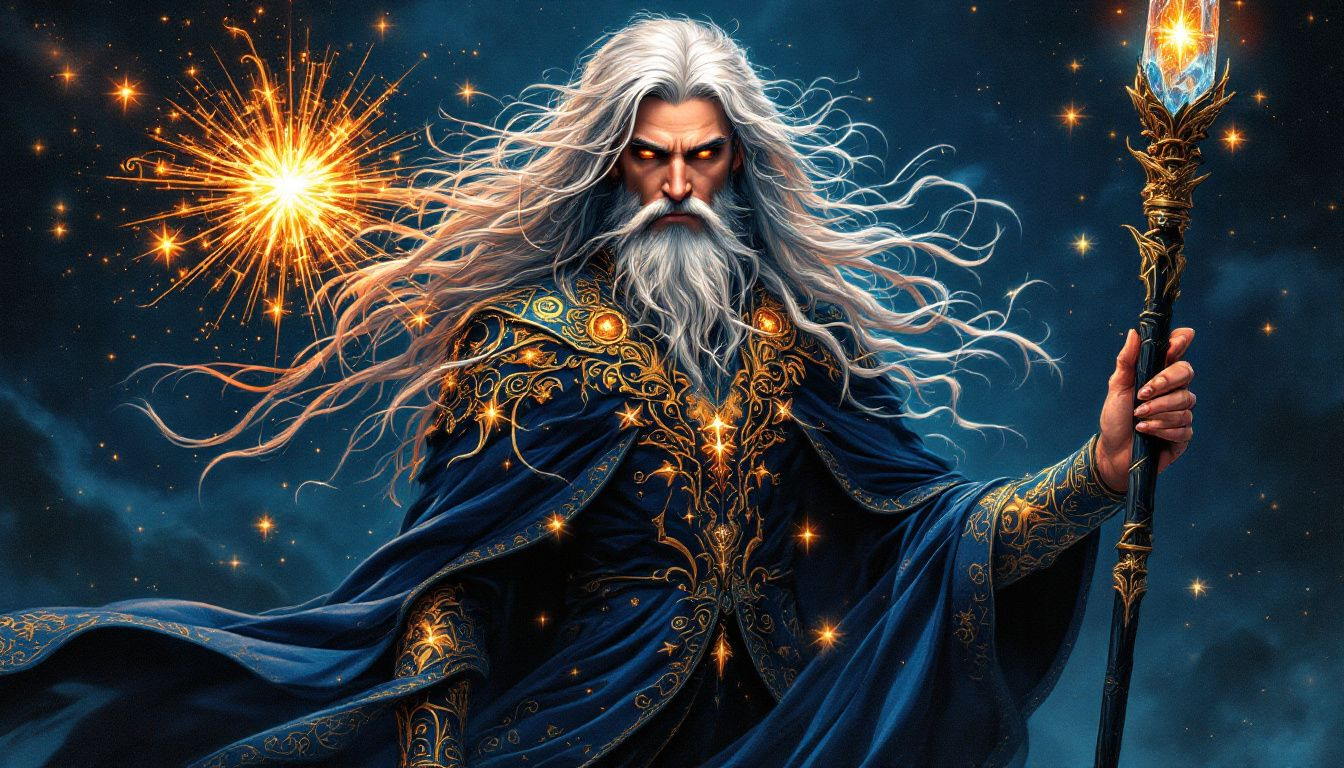
The embodiment of creation, the Magician card in a tarot deck is synonymous with wielding personal power to transform aspirations into tangible realities. This card represents the ability to harness one's determination and imagination to shape desires into existence. If this card emerges during a tarot reading, it’s an indication that we possess the requisite determination and imagination to shape our desires into existence. This particular card serves as a poignant reminder of our innate ability to progress within life.
An endless loop symbol hovers above his head on the Magician card, representing boundless potential for crafting and realizing one’s ambitions. Often depicted with emblems related to earth, air, fire, and water—the four classical elements—this portrayal emphasizes the Magician’s adeptness at utilizing available resources.
In encouraging us toward self-empowerment through our intrinsic abilities and gifts, The Magician motivates us towards fostering beneficial transformations in our lives. It conveys encouragement specifically when embarking on fresh ventures or chasing cherished dreams by signaling an opportune moment for turning what we envision into reality. Essentially reminding us: We are indeed capable masters of molding both spiritual prospects and material outcomes according to desired objectives within a tarot reading narrative.
Inner Wisdom of The High Priestess
The High Priestess tarot card is a symbol of emotional depth, enigma, and extrasensory perception. Its appearance during a tarot reading denotes an emphasis on relying upon one’s internal insights and self-knowledge for direction, highlighting the significance of introspection over seeking answers from external sources.
Featuring elements like columns that signify the harmonization of male and female forces, along with a crescent moon at her feet indicative of our emotions as well as intuitive mysteries. The backdrop adorned by pomegranates represents prosperity while acting as a gateway separating physical existence from spiritual truth.
This card prompts us to explore beneath our conscious thoughts to appreciate the esoteric feminine power within ourselves. It suggests delving into profound reflection to unearth intrinsic sagacity. Encountering the High Priestess in your reading signals it’s time for meditation—convening with personal intuition—to inform life choices rooted deeply in your own experiential understanding.
Embracing Femininity with The Empress
The Empress card is emblematic of:
-
the feminine essence
-
allure
-
affection
-
natural bonds
-
sexuality
-
reproductive power
Portrayed amidst verdant scenery, the Empress embodies care-giving qualities, prosperity, and fruitfulness, underscoring her ties to Mother Earth. This card brings attention to the significance of nurturing oneself and indulging in self-gratification.
Adorned with a diadem bearing twelve stars, she signifies her deep connection to the cosmos and her expansive influence therein. Concurrently, her scepter denotes dominion over nature’s realm.
When encountered, The Empress encourages us to welcome our inner femininity and take pleasure in life’s abundant beauty that surrounds us.
Leadership and Authority: The Emperor
The Emperor card signifies the importance of leadership, structured approaches, and harnessing one’s personal power. It calls attention to the necessity for reasoned and logical decision-making processes in professional life. Achieving success in your career may well hinge on establishing a disciplined framework.
This card is typically portrayed with an image of a ruler seated upon his throne, surrounded by emblems that epitomize fortitude. The zodiac sign Aries is associated with this tarot figure, underscoring attributes like decisive leadership capabilities. Guidance from this card suggests prudence and meticulousness when embarking on fresh endeavors or forging new connections.
As the Emperor card comes into play, it reinforces the concept that strict adherence to established norms and guidelines can underpin achievement. Its presence prompts us to seize command decisively—imposing orderliness where necessary—and assume a stance marked by confidence as well as authoritative control.
Spiritual Guidance from The Hierophant
The Hierophant card embodies the essence of divine counsel, conveying celestial insights into worldly scenarios. It stands as a symbol for the bond with conventional spiritual customs and structures, advocating for commitment to sacred teachings while fostering an outlook rooted in spirituality.
Encountering the Hierophant underscores the value of pursuing guidance from individuals seasoned in spiritual matters. Its astrological association with Taurus highlights a focus on steadfastness and maintaining one’s core spiritual beliefs. The significance this card places on a journey towards spiritual enlightenment calls for profound introspection and self-discovery.
The Lovers: Choices and Relationships
The Lovers card is symbolic of intimate relationships and pivotal life choices, suggesting that one is at a juncture where making decisions in harmony with personal ethics is crucial. Within the realm of partnerships, it highlights the necessity for dialogue and recognizing individual needs prior to establishing bonds.
Simultaneously, this card prompts consideration that if a relationship’s underpinning is as unstable as depicted by the Tower, it may require reassessment to ensure its longevity. The emphasis from the Lovers card is on selecting paths that resonate with our authentic identities and cultivating substantial relationships.
Drive and Determination: The Chariot
The Chariot card is an emblem of ambition and resolve, aligned with the Cancer zodiac sign, and signifies a period of emotional transformation requiring guidance. It heralds advancement and conquest while highlighting the importance of harmony among conflicting elements.
Featuring a character managing two sphinxes or horses within its imagery, The Chariot illustrates the unification of disparate parts in one’s life. Its appearance counsels perseverance and proactivity as it suggests that triumph is close at hand. Portraying the quintessential figure of a resolute commander, The Chariot manifests both discipline and aspiration.
Tapping into Inner Strength
The depiction on the Strength card often includes a woman who is gently subduing a lion, which illustrates the harmonious combination of inner might and kindness. This emblem signifies more than mere physical prowess. It encompasses the fortitude of spirit and emotional endurance required to overcome adversities. The visual portrays a scene where grace triumphs in demanding circumstances.
Upon drawing this card, one becomes acutely conscious of their inherent power, prompting them to harness their primal impulses and channel them constructively. It serves as an affirmation that we possess adequate strength to prevail over life’s obstacles while reclaiming our vigor anew. It stresses the pivotal role played by emotional mastery and empathy in cementing personal steadfastness as well as resilience.
Confrontation with one’s darker aspects alongside recognizing our trepidations via both Strength and Devil cards can be transformative toward self-empowerment and profound introspection. By facing down shortcomings head-on, individuals may undergo short-lived discomfort but gain lasting sagacity for enduring development.
Solitude and Reflection: The Hermit
The Hermit card stands as a representation of seclusion, self-examination, and contemplation on the innermost aspects of oneself in order to achieve clear understanding. It is emblematic of a journey towards wisdom and spiritual illumination that is attained through profound self-reflection.
In this context, The Hermit’s lantern serves as an allegory for the search for enlightenment and the illumination that comes from within. At times, it can also signify a mentor or therapist who imparts guidance to others. This card prompts one to delve into personal introspection concerning their emotions and thoughts which aids in promoting individual development on both a personal level and along spiritual dimensions.
Understanding Life Cycles: Wheel of Fortune
The Wheel of Fortune symbolizes the cyclical nature of life, underscoring that our actions influence the cycles of karma and consequently shape what life bestows upon us. When times are prosperous, this card serves as a reminder to relish these periods knowing they are temporary and challenges will re-emerge. Conversely, in moments of adversity, it assures us that fortunes will eventually turn favorable again, lifting us back up.
Permanence is illusory. Change remains an unyielding fixture in our existence necessitating constant adaptation. As we navigate through life’s perpetual cycles, each experience affords growth coupled with augmented wisdom for handling forthcoming situations.
Envisioned as a spiral staircase ascending skyward, the Wheel of Fortune exemplifies how although life’s lessons may recur throughout one’s journey—they present themselves on progressively higher planes of comprehension and insight.
Balancing the Scales: Justice
The Justice card highlights the significance of karmic equilibrium, impartiality, and the repercussions stemming from one’s actions. It underlines the necessity for equity in making choices and ensures that results are dispensed without bias. The representation suggests that each act bears its consequences which subsequently influence forthcoming decisions and trajectories.
Associated with Libra, this card serves as a reminder to prioritize balance and evenhandedness. Its appearance in a reading indicates an impending verdict or resolution that will be justly determined by previous behaviors.
Letting Go with The Hanged Man
The Hanged Man card embodies the concepts of sacrifice, disengagement, and the essential act of letting go to progress. It hints at a yearning for action paired with hesitation about where to initiate. This card serves as a reminder that during periods of stress, it’s sometimes necessary to pause, allow the universe its influence, and maintain faith in how things unfold.
This particular tarot representation implies that relinquishing control and severing ties with attachments can often pave the way for genuine advancement. The Hanged Man assists in guiding you away from circumstances by easing your hold on what has become ineffective or by helping you disconnect from potential outcomes.
Transformation through Death
The Death card, associated with Scorpio, signifies the transformative cycles of change—heralding closure and the dawn of fresh starts. This card typically marks a cycle’s conclusion, urging people to welcome transformation and novel prospects.
Representative of reconstruction and enhancement post-cessation, the Death card underscores personal development. It denotes discarding outdated behaviors in favor of rejuvenation and advancement. Acceptance of change is crucial for self-improvement as it paves the way to new opportunities.
Finding Balance with Temperance
The Temperance card stands as a representation of temperance, tranquility, forbearance, and flexibility. It advises adopting a relaxed approach and maintaining composure in the face of tension-ridden situations. This card captures the essence of alchemy through its encouragement to mix various components to attain balance.
On this card is portrayed an angel that signifies the unification of feminine and masculine forces. To foster the equilibrium advocated by Temperance, engaging in activities such as meditation and mindfulness is advised.
Recognizing Personal Freedom: The Devil
In a tarot reading, the presence of the Devil card could suggest that one is experiencing sensations of entrapment and sees few available choices. It underscores themes associated with bondage and impotence, emphasizing emotions linked to being confined. This particular tarot card propels us towards a more hopeful understanding.
This very same card implies that liberation lies within our own hands by accentuating the significance of acknowledging individual decisions we make. The Devil tarot card serves as a reminder that it’s possible to escape constraints we’ve placed on ourselves and reclaim sovereignty over our existence.
Embracing Change: The Tower
The Tower card embodies the concept of profound transformation, frequently depicted by a dramatic and tumultuous illustration. Its core messages are rooted in destruction and abrupt conclusions.
By signifying the need to dismantle frail aspects of one’s life with the aim of constructing something more resilient, the Tower card conveys that although its implications might seem unfavorable, such terminations will be beneficial in hindsight. The lesson imparted by this card is that accepting change is crucial, notwithstanding any temporary distress or sacrifice it may entail.
Hope and Renewal: The Star
The Star card embodies the concepts of hope, healing, regeneration, and positivity as it depicts a woman dispensing water to symbolize harmony between the subconscious and conscious spheres. This tarot card acts as a soothing presence that instills tranquility.
Encouraging people to keep their trust in cosmic direction, the Star card is an advocate for a hopeful perspective on what lies ahead. It reinforces the notion that calm follows turbulence and emphasizes that rebirth is always within reach.
Overcoming Fears: The Moon
The Moon card signifies the presence of concealed emotions and thoughts, encompassing worries and apprehensions. Its emergence in a reading typically indicates that such fears might eclipse hope and prospective opportunities. This particular tarot card accentuates ambiguity and perplexity, encouraging individuals to trust their innate intuition.
Confronting feelings connected to The Moon card requires unearthing repressed sentiments for reconciliation. It acts as an impetus for introspection, reminding one that obscured hidden realities need uncovering through earnest examination of the subconscious mind.
Joy and Optimism with The Sun
Depicting a youthful figure on a pure white steed, the Sun card in tarot reading is synonymous with elation and constructive strides forward. It signals an era of self-improvement and exploration, nudging individuals to accept their authentic nature.
Within the realm of love tarot readings, the radiance of the Sun card points toward satisfaction and concord within partnerships. Emblematic of prosperity and unwavering conviction in universal navigation, it heralds robust health as well as spiritual advancement that fosters overall happiness.
In professional settings, this radiant card foretells outstanding achievements accompanied by an optimistic frame of mind. The presence of the Sun card in a reading serves as a reminder for us to savor life’s warmth and cherish its plentiful joys.
Reflecting and Growing: Judgement
The Judgement card serves as a critical cue for introspection and education from previous events, fostering essential personal development. It propels one to confront their past with honesty in order to make pivotal decisions about life. It suggests that the path of growth persists even after achieving certain goals, prompting consideration of upcoming endeavors.
With the emergence of the Justice card comes an assurance that equitable outcomes will be delivered based on prior conduct. Its presence denotes not just impending justice, but also an opportunity for individuals to hold themselves accountable and rectify any misdeeds.
The central themes conveyed by the Judgement card are spiritual evolution, revitalization, and preparedness for novel ventures in life. It champions authenticity through reliance on actual information over unsubstantiated claims. The depiction includes Archangel Gabriel as a prominent figure symbolizing inspiration towards awareness and higher understanding.
Completion and Fulfillment: The World
The World card embodies fulfillment and success, signifying a state of readiness to embark on the next segment of one’s journey. It marks the realization of an important goal or the conclusion of an extensive project.
Conveying unity and balance within the universe, this card suggests a vibrant condition of completeness. It denotes that all endeavors have culminated in completion, inviting celebration for both the path traversed and its resultant achievements.
Major Arcana vs. Minor Arcana
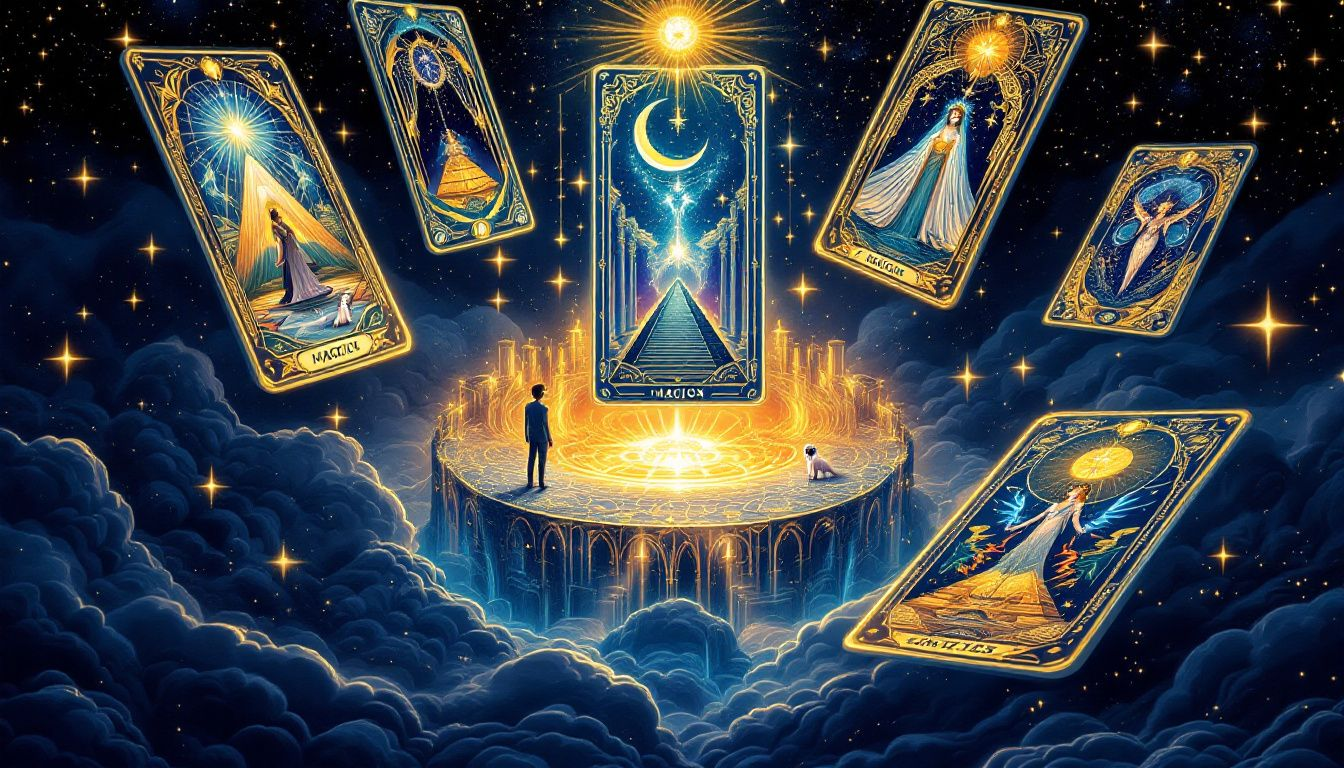
In the practice of tarot, the Major Arcana cards are pivotal as they embody major life milestones and serve as key signposts offering guidance. Each card in this set conveys distinct messages that mirror overarching themes within one’s life journey and capture its various highs and lows.
Contained within the Major Arcana is a sequence of 22 cards that correspond to profound transitions in life, while an additional set known as the Minor Arcana encompasses 56 cards which illustrate day-to-day occurrences. The role of Major Arcana during a tarot reading often pertains to spiritual teachings. On the flip side, insights pertaining to more mundane aspects derive from the Minor Arcana.
The narrative spun by both sets—the significant junctures highlighted by Major Arcana alongside daily nuances showcased through Minor Arcania—create an intricate tapestry depicting an individual’s path towards personal growth. Comprehending these tales requires interpreting each card’s unique meaning whilst discerning how their interconnections contribute to broader interpretations throughout a reading session.
Reversed Cards and Their Meanings
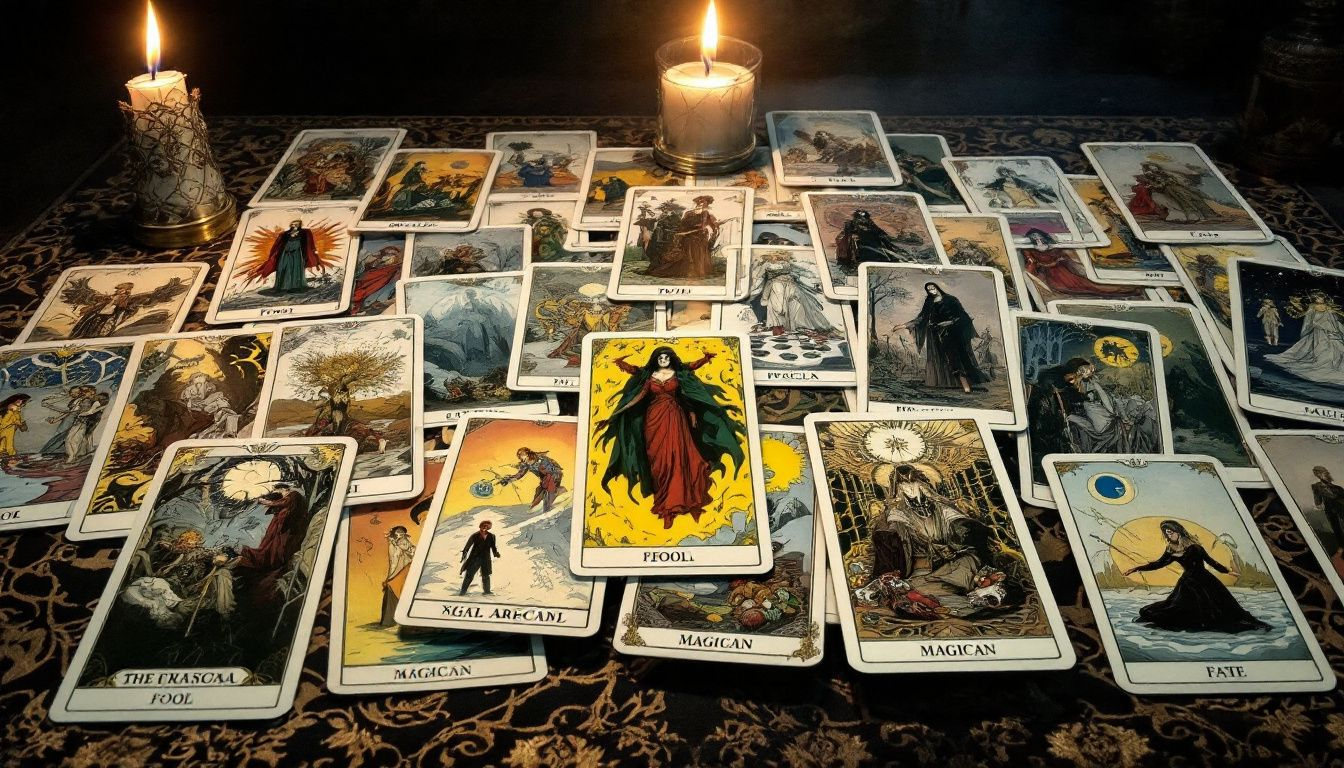
The skill in interpreting reversed tarot cards relies on the reader’s intuitive grasp and how they relate to the broader context of the tarot reading. When encountering a Tarot card that appears upside-down, it should prompt deeper contemplation and analysis since its position is atypical. This reverse often leads some interpreters to view these cards as expressing their ‘shadow’ meanings, which typically casts light on more negative or challenging elements.
To understand reversed cards, one might consider an inversion of their typical significance, thereby suggesting contrasting attributes. The inclusion of such cards adds layers of complexity to a reading because it necessitates knowledge not just of each card’s established meaning but also its antithesis. A reverse orientation can underscore issues like misuse of power or an absence of control.
For instance, if the Lovers card emerges in its inverted form during a spread, this could point towards relationship strife or disparities requiring attention for harmony. Similarly, should we see the Strength card overturned? It may signal internal struggles with confidence and doubts obstructing one’s journey toward personal development. When faced with an upturned Temperance card, it suggests there might be overindulgence present. Thus signaling you need reevaluation of your life’s focal points.
Astrological Correspondences in Major Arcana
Linking the Major Arcana to specific astrological influences offers a richer dimension to tarot card readings by incorporating distinct celestial energies. The Moon card, tied with Pisces, highlights intuition and potential confusion affecting one’s emotional realm. Taurus’ practicality and value-centric traits are mirrored in The Hierophant.
The pursuit for knowledge through self-reflection is exemplified by Virgo’s association with The Hermit, while Temperance takes its cue from Sagittarius, representing the harmonious balance of patience required in life. Similarly imbued with Cancerian energy, the High Priestess embodies deep intuitive insights and emotions.
Associations like Venus with The Empress underscore themes central to love, allure, and harmony that prevail within life’s journey. In contrast, Aquarius aligns with The Sun card, which heralds optimism and fresh starts. Opposite yet comparable is Capricorn linked to The Devil card reflecting limitations as well as ambitions towards autonomy.
Understanding these cosmic correlations allows for a more layered analysis during tarot sessions—offering readers an enhanced capacity for deriving profound revelations from their decks when exploring individual spreads.
How to Read the Great Arcana in Tarot
Prior to initiating a tarot reading, it’s crucial to purify the deck while concentrating on an honest and precise question that reflects your purpose. For Tarot novices, mastering the upright meanings first is often advantageous before moving on to more complex interpretations of the cards. There isn’t a sole definitive approach for drawing tarot cards. Experimenting with different styles may strengthen one’s personal affinity and understanding of them.
Adopting a three-card spread can shed light upon various temporal dimensions—past, present, and future—of any circumstance by providing a straightforward yet potent framework for interpretation. Starting each day with pulling a single card could be integral in cultivating daily self-awareness rituals that assist in establishing intentions and guiding attention towards forthcoming pursuits.
To truly comprehend the Major Arcana is to appreciate each card’s distinct significance as well as their interconnected narrative when they come together during readings. These particular cards unfold an overarching tale emblematic of personal evolution and life encounters. Immersing oneself into studying the Major Arcana allows individuals not only profound reflections upon their own path but also unveils collective qualities binding us all together within our journey through existence.
Summary
The journey through the Major Arcana cards offers a profound look into the significant life events and universal human experiences that shape our lives. From the fresh starts symbolized by the Fool to the ultimate fulfillment represented by the World, each card provides unique insights and guidance.
Understanding the Major Arcana card meanings can provide profound insights into our lives. Each card has a unique message, reflecting broader life themes that help us navigate through our experiences. By learning to read these cards, we can gain a deeper understanding of our own life’s journey and the universal truths that connect us all.
As you continue to explore tarot, remember that these cards are tools for self-reflection and growth. Embrace the journey, trust your intuition, and use the wisdom of the Major Arcana to guide your path.
Frequently Asked Questions
What are the Major Arcana cards in a tarot deck?
In a tarot deck, the Major Arcana is composed of 22 cards that represent significant life occurrences and collective human experiences. They offer profound understanding in times of important transitions.
These cards are utilized as potent instruments for contemplation and direction during personal journeys.
What does the Fool card represent in a tarot reading?
The Fool card in a tarot reading symbolizes fresh starts and new beginnings, highlighting untapped potential and the excitement of embarking on a new adventure.
How do reversed cards affect a tarot reading?
Reversed cards in a tarot reading require careful consideration, as they often indicate shadow meanings and less favorable aspects, prompting deeper reflection on the situation at hand.
This can reveal underlying issues that may need to be addressed.
What is the significance of astrological correspondences in Major Arcana cards?
Astrological correspondences in the Major Arcana deepen tarot interpretations by connecting each card to specific astrological energies, offering more nuanced insights during readings. This adds a layer of meaning that enriches the understanding of each card’s influence in your life.
How can beginners start reading the Major Arcana in tarot?
To start reading the Major Arcana in tarot, cleanse your deck, concentrate on the upright meanings, and use a three-card spread to explore insights about a situation.
This foundational approach will enhance your understanding and connection with the cards.







